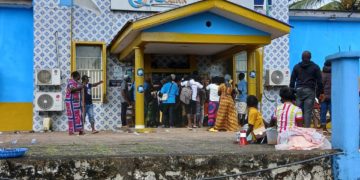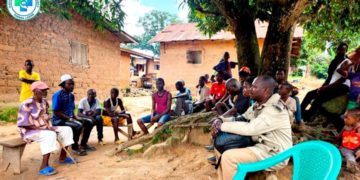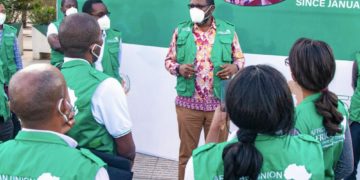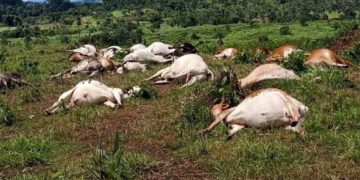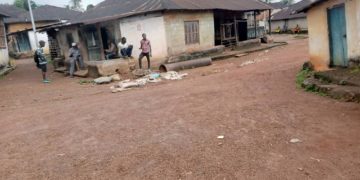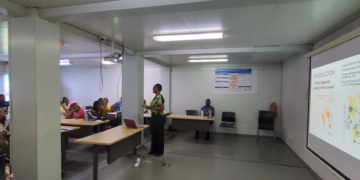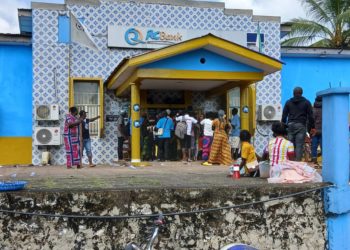More than half of Sierra Leone’s population, including three quarters of its rural population, live in poverty, a new World Bank report says.
The ‘Sierra Leone Poverty Assessment’, launched on Thursday, December 15, assessed data in the last two decade from 2003 to 2018, and reviewed the country’s track record in reducing poverty and improving livelihoods and wellbeing of citizens through temporal and spatial lenses. The authors of the report looked at several areas, including structural transformation, public and private services access, rural poverty, and secondary cities.
According to the report, the official poverty rate for the country as of 2018 is 57 percent. It also shows that the incidence of poverty in the country varies significantly, ranging from 23% in Greater Freetown, to 49% in other urban areas, and 74% in rural areas.
The northern region of the country experienced the highest rate of poverty, with 77%, while Freetown experienced the lowest rate, with 23%.
The authors however say that despite facing many challenges in improving the welfare of its population, with increased investment in education provision and quality skills, more Sierra Leoneans can access formal opportunities which can lead to improvement in living standards and reduction of poverty.
The report was formally launched at a ceremony at the Atlantic Lumley Hotel in Aberdeen in the west end of Freetown.
World Bank Country Manager, Abdu Muwonge, chaired the event graced by top government officials and representatives of development partners.
Mr Muwonge was quoted in a statement stressing the role education and job creation can play in improving the socio-economic wellbeing of the people.
“If education is a barrier towards accessing opportunities especially in the capital and other urban cities, then increased investments in the sector throughout the country could be a plausible pathway in ensuring that citizens are equipped with the knowledge and skills that make them suitable for the job market, thus improving their socio-economic wellbeing,” he said.
The World Bank country manager added at the launching ceremony that the Assessment is just one of the tools at the disposal of the Bank to advice the government on possible policy actions required to address poverty issues in the country.
Sierra Leone’s Finance Minister, Dr Dennis Vandi, gave the keynote speech at the event which was characterized by statements and an expert panel discussion analyzing the findings. Dr Vandi said that poverty eradication was at the core of the government’s national development agenda, noting that the report will no doubt inform development and design of pro-poor policies going forward.
“We are happy to have this report at the right time,” he said, referencing the imminent expiry of the Bio Administration’s current development blueprint, the National Development Plan. Vandi said the publication contains “critical inputs” into the document.
The report attempts to explain why some areas in the country are poorer than others and the role urbanization plays in poverty reduction. It notes that as in other low-income countries, growth does not necessarily translate to poverty reduction and GDP per capita does not tell the whole story.
“Many countries achieve lower rates of poverty than predicted by their GDP per capita, likely because they have good economic and social policies and effective institutions,” the World Bank statement says.
“Middle-income countries (often with economies that have started on the path of structural transformation) appear to be especially successful in achieving lower rates of poverty, possibly due to enhanced productivity,” it adds.
The report further reveals that over the past decade, the main driver of poverty reduction was strong growth in urban areas as evidenced by a large poverty decline. An estimated 43% of the country’s population is said to be in urban centers. The authors say though the number of private sector jobs increased in urban areas, many of them were non-wage low-productivity jobs in retail trade and to a lesser extent in transport, construction, and food services.
“Population growth is exacerbating pressures on the urban economy, as the number of youths entering the labor force is growing rapidly. Low investment in urban infrastructure may be constraining economic growth in cities and towns and, consequently, improvements in welfare,” the statement adds.

Other recommendations in the report for policy priorities with the opportunity to increase growth and improve welfare include investing in human capital, investing in secondary cities to make them more productive, increasing communication and connectivity between outlying rural areas and secondary cities to improve rural welfare, and continuing to aim for universal provision of basic services, including in small villages.
There is also a recommendation for the authorities to develop and improve agriculture, which the authors say would play a critical role in poverty reduction as about 80% of the rural population relies on agriculture.
Paul Corral, a World Bank Senior Economist and co-author of the report, made a presentation on how secondary cities can help in reducing poverty.
“Secondary cities could provide non-farm employment opportunities, which can lead to income diversification and higher productivity. Given that a large share of Sierra Leone’s population depends on farming and that the majority of the poor are involved in it, these benefits hold promise for reducing poverty,” Corral was quoted in a statement.

